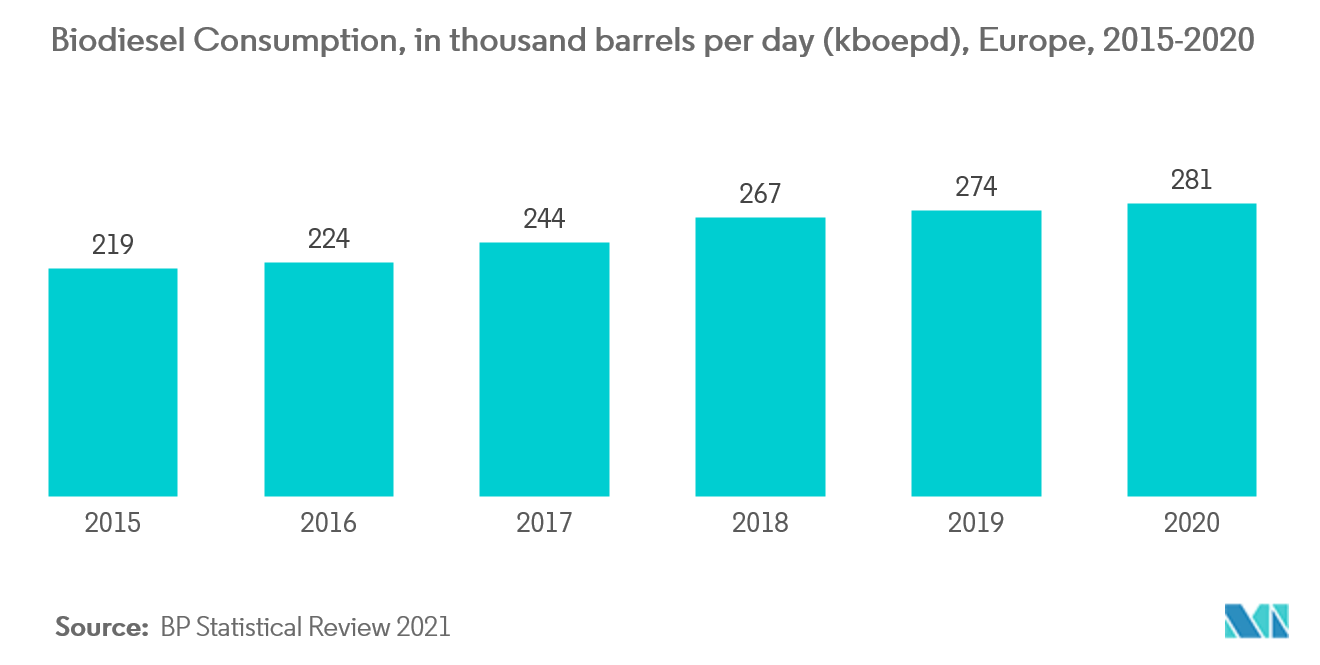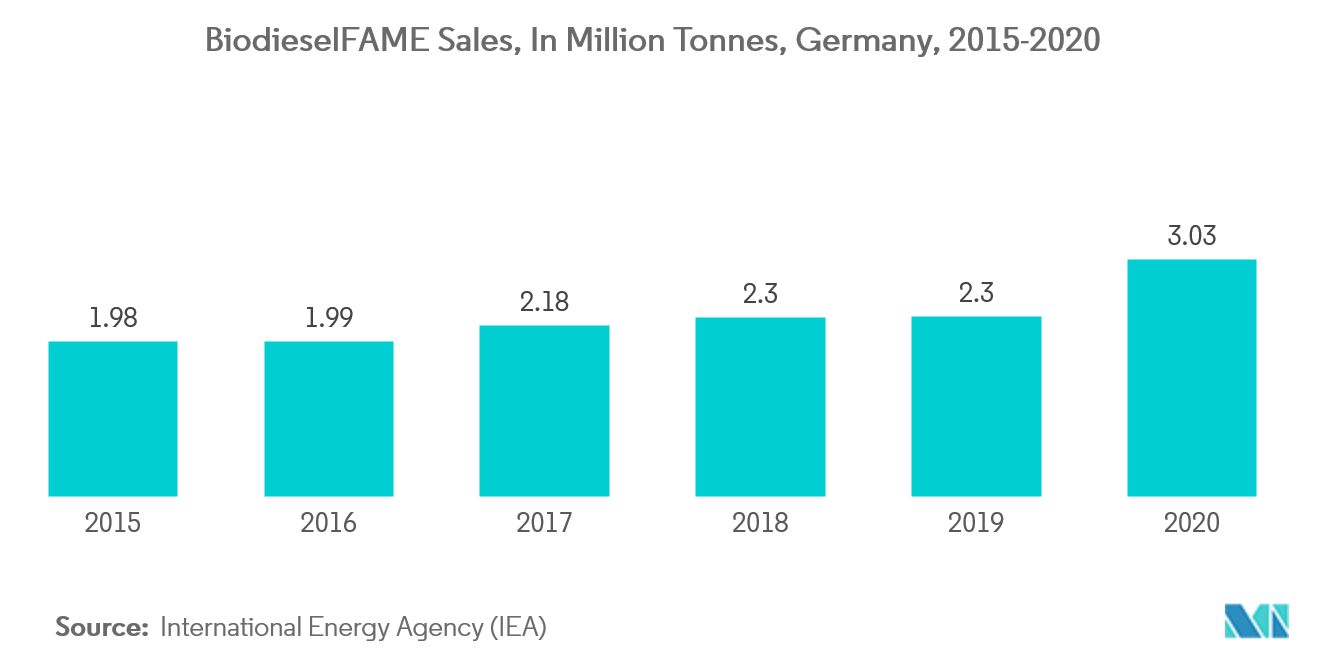Market Trends of Europe Bioenergy Industry
This section covers the major market trends shaping the Europe Bioenergy Market according to our research experts:
Biodiesel to Witness Significant Growth
- Biodiesel is a sustainably produced renewable fuel that can be manufactured using various forms of agricultural products, including vegetable oils, animal fats, or recycled restaurant grease. It is primarily used in diesel vehicles or any equipment that operates on diesel fuel. Furthermore, biodiesel's physical properties are similar to those of petroleum diesel. However, there are some differences related to its energy density.
- Europe is one of the largest producers of biodiesel in the world, just slightly ahead of the Asia-pacific region. In 2020, Europe produced 245 thousand barrels of oil equivalent biodiesel per day, which was less than 255 thousand barrels per day produced in 2019. This was primarily due to the COVID-19 pandemic supply chain shock as the biodiesel market is still in its nascent stage, and any hindrance is expected to create significant issues in the production.
- Further, as most of the European countries are an importer of agricultural products, a large number of feedstocks used for the creation of feedstock have to be imported from various countries around the globe, such as Ukraine, Indonesia, and Malaysia, among others.
- In 2022, the Russia-Ukrainian conflict has created another problematic situation for biodiesel growth as nearly 40% of Soy Oil is imported from Ukraine. Such uncertainty is expected to make the companies push towards more resilient supply chains in the coming years.
- The Biodiesel consumption in Europe has grown to 281 thousand barrels per day in 2020 from 274 thousand barrels per day in 2019. This growth is expected to increase in the forecast period due to governmental support.
- Further, The governmtal support in the European continent includes - In 2021, the 'Fit for 55' package from European Union which includes a proposal for a transport GHG intensity requirement that would double the current renewable energy target for transport of 14% by 2030. Further, the package consists of a proposed 2% SAF blending mandate by the end of 2025 under the ReFuelEU Aviation initiative and a 2% GHG improvement for shipping under FuelEU Maritime. Thereby pushing the transportation sector towards the adoption of cleaner fuels.
- Hence, biodiesel is expected to witness significant growth due to increasing governmental support and rising biodiesel consumption

Germany to Witness Significant Growth
- Germany is one of the largest economies in Europe and is a major user and producer of biodiesel on the European continent. The country has been pushing for the increasing usage of cleaner fuels such as biodiesel.
- Germany is a major producer of biodiesel, with a major proportion of the sales taking place in the form of Blending with B100 form of fuel reducing over the years.The amount of biodiesel produced by Germany under its government's FAME scheme has risen to around 3.025 million tonnes in 2020.
- Further, the country is a major exporter of biodiesel, mostly to its neighbors, with the Netherlands being the among the topmost importer. However, Germany also imports a large number ofits feedstock needs from around the globe, with palm oil and soy oil, among others taking a major share.
- To reduce the greenhouse gas emissions and imports, Germany has announced that it will stop the application of palm oil as a raw material to produce biofuels from 2023. In place of that, Germany is expected to instead give a quota for minimum use of waste materials for biofuel production
- This is being done in accordance with the European Commission's regulations for tightening rules on palm oil usage as it has been linked to deforestation. Of about 3.4 million tonnes of biodiesel produced in Germany in 2020, oil from rapeseed made up approximately 60% of raw materials, used edible oils collected from food processors and restaurants made around 25%, palm oil 3.9%, and the rest was mainly soya oil.
- Hence, germany is expected to witness growth due to governmental policies and growing awareness for cleaner fuels. However, a dependence on global imports of feedstock is expected to hinder the market.


